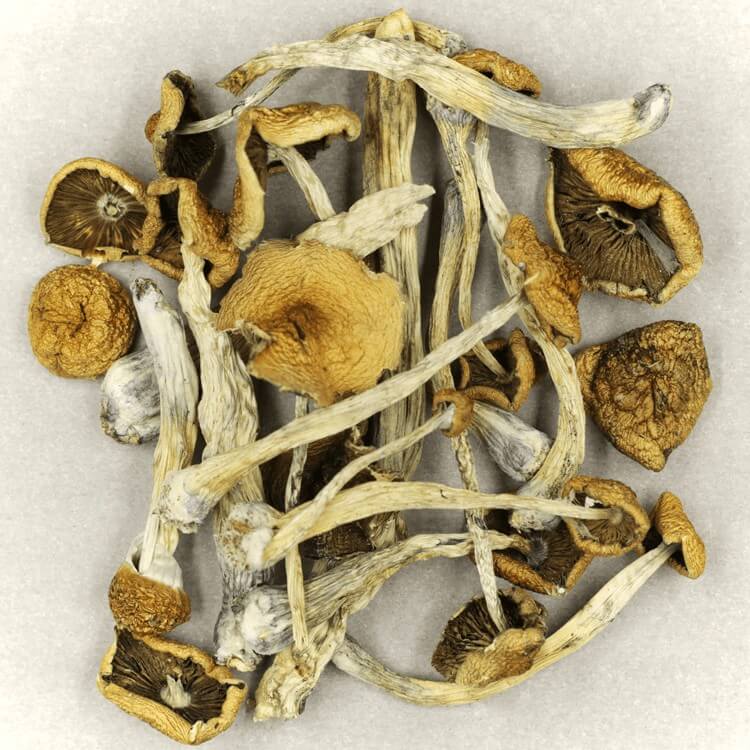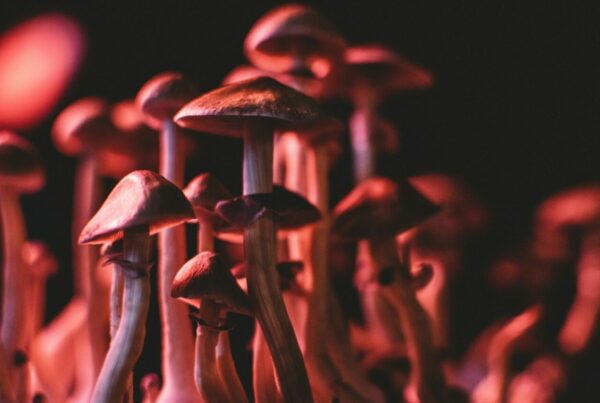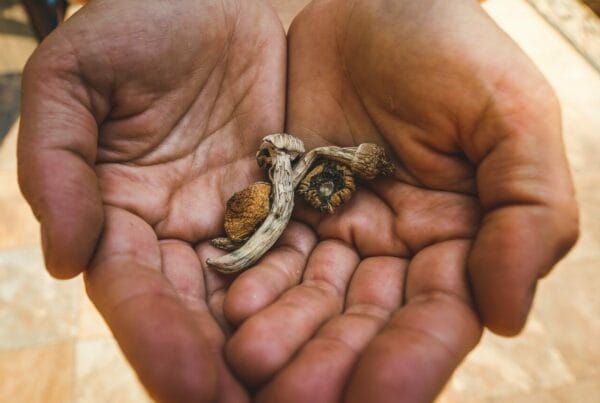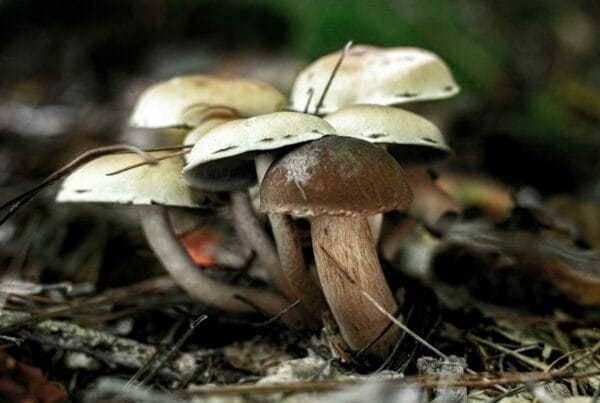The power of the Psilocybe mexicana mushroom was once thought of as mythical. However, psilocybin research has dramatically changed this view. Consistent therapeutic discoveries by the psychedelic research community have led to growing acceptance in the medical world. Experts view this emerging field with optimism and are constantly working to set safe dosage levels for medicinal purposes.
Key Takeaways
- Researchers are using innovative techniques like liquid chromatography combined with tandem mass spectrometry to measure mushroom potency.
- Psilocybe Mexicana, along with other mushroom types, is being tested in clinical trials to evaluate its potential therapeutic benefits.
- Accounting for genetic diversity in magic mushrooms is crucial for creating an accurate dosage guide.
Psychedelic Mushrooms: Emerging from the Shadows to Pioneering Research
In the past, only a limited number of ailments were known to benefit from Psilocybe Cubensis. However, psilocybin is currently making significant progress in revealing its hidden medical potential.
Experts are exploring the potential of Psilocybe Mexicana and other powerful strains for clinical research and trials. Regardless of whether the studies are in vivo or in vitro, this strain proves effective in demonstrating the true effects and benefits of the fungus species.
The Entrance of Psychedelics into the Market
Once concealed, but now in the open—continual progress and discoveries are increasingly garnering public attention, especially among those seeking therapeutic solutions. Traditional treatments for mental health issues often fail to deliver, leading individuals to search for more dependable alternatives.
Enter magic mushrooms.
Patients dealing with mental health conditions are resorting to psilocybin, which has demonstrated potential in treating depression, alcohol dependency, anxiety, compulsions, tics, chronic pain, and more.
Currently, medical professionals are investigating innovative ways to accurately determine the ideal dosage for safe patient use. Notably, a group of researchers from the University of Texas has created a model to extract psilocybin and psilocin concentrations.
Establishing the clinical potency of magic mushrooms is now feasible.
The Distinct Features of Psilocybe Mexicana
Research has extensively covered Golden Teachers, Blue Meanies, and B-Plus. To enhance our knowledge on the safe consumption of magic mushrooms, it is crucial to investigate other species as well.
The Mexicana species has gained popularity in the research realm, not solely because it’s one of the most ancient species, but also due to its relatively low potency, which may align better with medicinal drug standards.
Although the strength of this Mexican strain may not be as high as others, it can still produce the same impact as more conventional strains. Given the growing interest in microdosing among patients, this strain becomes an optimal choice.
The Mexicana strain exhibits consistent levels of psilocybin and psilocin, mirroring other strains. So, what makes this particular strain stand out? Its historical and anthropological significance offers the answer.
Delving into a Rich “Mexican” History
In ancient periods, psilocybe mexicana naturally sprouted in moss. Indigenous populations held these psilocybin mushrooms in high regard due to their varied applications, often associated with mystical or otherworldly events.
Let’s focus on Mexican mushrooms. These mushrooms were used for the first time over 2000 years ago by the natives of North and Central America. The ancient Aztec civilization referred to these mushrooms as “food of the Gods,” or “teonanácatl” in their native tongue.
If the Aztecs were present today, they would vouch for the transformative, emotionally profound, and mentally balancing effects of the Mexicana—despite not having a grasp of these modern terms.
Despite various cultivation techniques, this mushroom has successfully retained its inherent psilocybin concentrations, proving its genuineness. This authenticity is a universal standard that researchers and psychedelic research institutions greatly appreciate.
Innovative Methods for Testing Psilocybin Content and Potency
A team of ten scientists from the University of Texas at Arlington and other research institutions devised a novel method to test the potency of psychoactive compounds in mushrooms. This innovative measurement pattern combines liquid chromatography and tandem mass spectrometry.
Below are two groundbreaking techniques:
- Liquid chromatography is a technique employed to separate and examine chemical mixtures. In this context, it is used to isolate active chemicals present in mushrooms. The procedure entails passing a liquid sample through a column packed with a solid substance, referred to as the stationary phase. As different chemicals in the sample interact diversely with the stationary and mobile phases, they separate at differing speeds while moving through the column.
- Spectrometry typically investigates the interaction between matter and electromagnetic radiation at numerous wavelengths. It facilitates the identification and measurement of substances based on the specific wavelengths of light that molecules absorb and scatter. Consequently, it allows for the determination of the electronic, vibrational, and rotational states of a chemical.
The aforementioned technique was utilized on five different strains of magic mushrooms. The researchers found that the average total levels of psilocybin and psilocin in these strains ranged between 0.879 and 1.36. This exceeded the concentrations found in many other varieties, such as Bull Run and Cambodian. The accuracy of the study was affirmed by comparing its results with findings from other independent labs.
The agreement of results between the two labs further confirmed the reliability of their testing sequence in precisely determining the potency of the mushrooms.
If confirmed by experts, this could introduce a new spectrum of techniques to the existing methods of testing psychedelic strength, acting as an added safety measure to avoid incorrect dosage determinations.
Expanding Research to Additional Species
Extending research to additional species is advantageous. It can improve our comprehension of the health benefits linked with different strains and provide foundational data on the effects of less potent mushrooms.
Moreover, it can assist in educating individuals about the influence of varying dosages on the psychedelic experience. By comparing Mexicans with more potent strains like Psilocybe Cubensis, researchers can ascertain how different concentrations of active compounds can impact therapeutic outcomes.
For example, the Blue Meanies strain generates more powerful hallucinogenic effects, which could potentially be effective in treating conditions like depression. On the other hand, strains with lower potency are more suitable for microdosing or milder applications such as mood enhancement or focus improvement.
Diverse Genetics Contribute to Safer Treatments
It is not widely known that distinct cultivars or varieties possess unique genetic profiles and differ in potency, chemical composition, and effects. Understanding these distinctions allows healthcare providers to select the most suitable variety for specific medicinal purposes and adjust dosages to suit individual requirements, thereby reducing risks and maximizing benefits.
Take, for instance, Psilocybe Semilanceata (Liberty Caps) or Psilocybe cyanescens. Each has a distinct alkaloid profile that could prove beneficial in treating anxiety. On the other hand, synthetic mushroom varieties might be more effective for managing substance addiction or compulsive behaviors. This diversity enables the formulation of bespoke treatments that enhance safety and efficacy.
From this, we can infer that the genetic diversity of hallucinogenic mushrooms, bolstered by innovative techniques for potency assessment and identification, plays a pivotal role in devising safer medicinal applications.
Enhanced Safety for Medicinal Use
Let’s contemplate the potential ramifications of safer dosage practices.
- Lower risk of overdose: Accurate dosage ensures users are not at risk of overdosing. This also means that product labels should be explicit to avoid any consumer misunderstanding.
- Better predictability: Individuals can have better expectations of their experiences during the trips with more accurate dosing. This could alleviate overwhelming sensations and anxiety, resulting in improved patient satisfaction.
- Uniform measurement: Precision in dosage could establish a standardized scale, enabling people to easily refer to guides for potential effects.
Experience the Benefits of Accurately-Dosed Shrooms with Advanced Potency Tests | Buy Magic Mushrooms Online at Momentum Mushroom Canada
If these two groundbreaking techniques continue to be applied, you’ll no longer be surprised by unforeseen effects. Complement this with savvy online shopping at Momentum Mushroom Canada. We offer dried mushrooms that promise a serene, relaxing psychedelic journey without excessive psychoactivity. Buy psychedelics online in Canada via Momentum Mushroom Canada.
Frequently Asked Questions
Are Big Mexicans and Psilocybe Cubensis identical?
No, Big Mexicans and Psilocybe Cubensis are separate strains of mushrooms, hence they should not be confused. Big Mexicans contain a higher isolation of compounds, ranging from 0.5% to 1%, making them considerably more potent
Psilocybe Cubensis differs from its counterparts. It is important to note their visual differences as well: the former usually exhibits a bell-shaped cap, while the latter displays a more conical shape.
What’s the highest concentration of psilocybin and psilocin in Mexican mushrooms?
The concentration of both psilocybin and psilocin in Mexican mushrooms can peak at 0.25%. Although these levels are relatively low, equivalent to those found in the Golden Teacher strain, they can still induce robust psychedelic experiences, which may potentially have therapeutic benefits.
What’s the recommended dosage for medical purposes?
Generally, a dose ranging from 1 to 2 grams is recommended. However, this can fluctuate depending upon factors like the method of ingestion, individual metabolic rates, and the specific strength of the mushroom strain. Some individuals opt to take sub-threshold doses from 0.05 (50mg) to 0.025 grams (250mg) as a measure to reduce the hallucinogenic effects.





